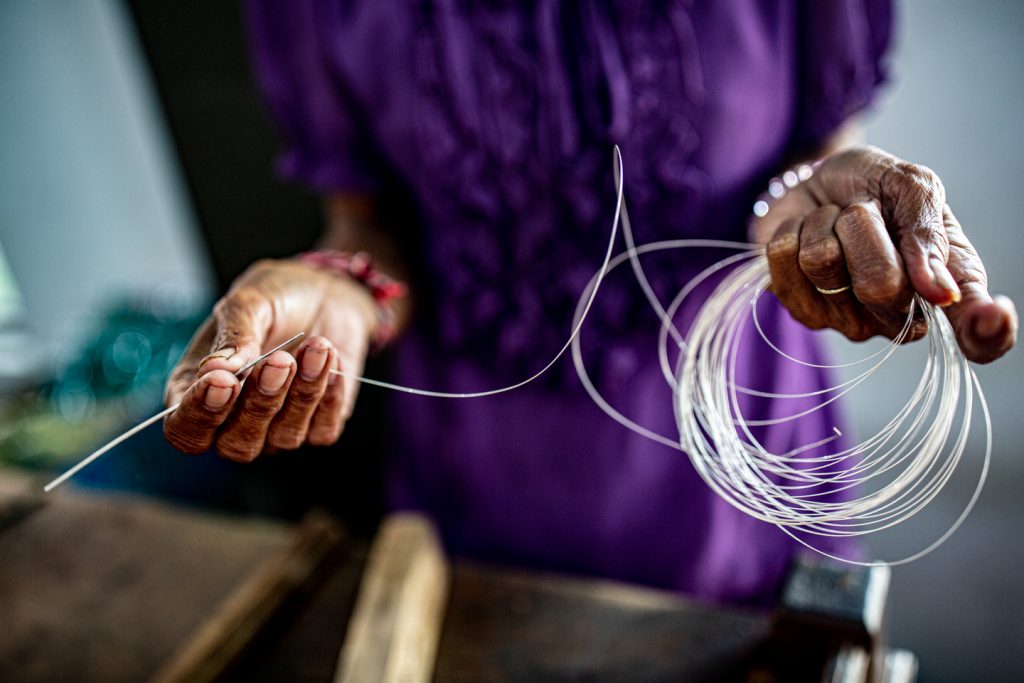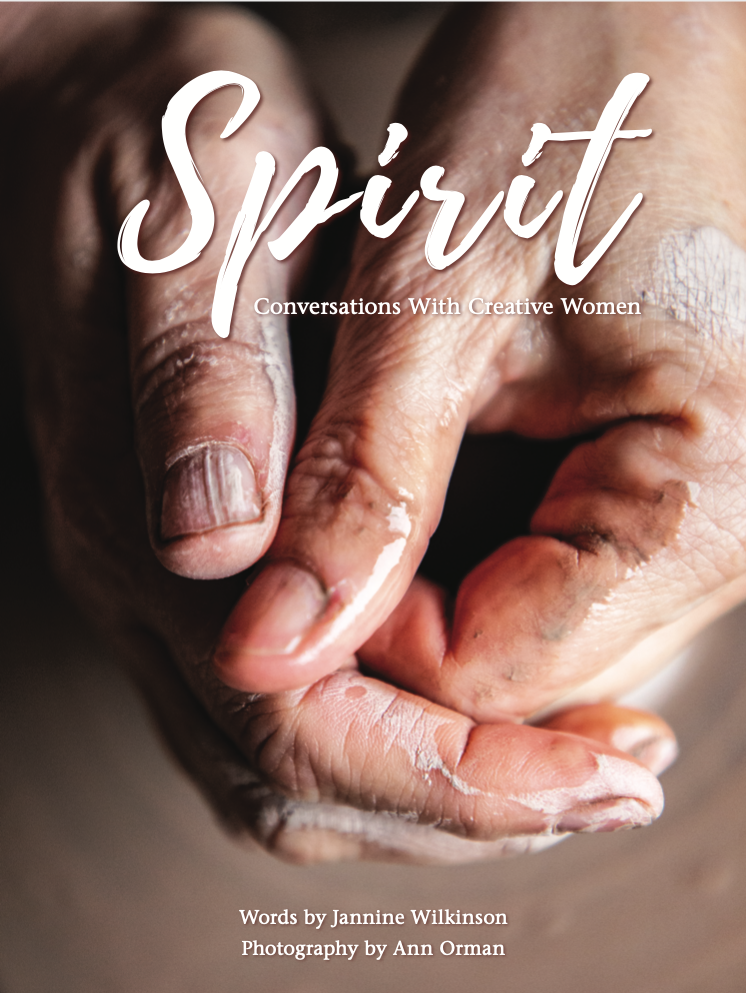Aotearoa NZ Photographers – Ann Orman
We had a chat with Aotearoa NZ Photographer Ann Orman about how she got hooked onto darkroom photography, sold everything and moved to Paris and then interviewed and photographed 34 women from across Aotearoa NZ for Spirit, a beautiful coffee-table style book, rich with stunning images of women creatives – looking at their work and their spaces.
This article is proudly brought to you by mychillybin.
![]()

How did you initially get started with photography?
I’ve owned various cameras almost my entire life. In my mid 30’s I decided to take a 2 day course in B&W film photography learning how to use my camera manually and to develop and print film. The rest as they say is history. I was hooked. Practically every day for the next 18 months I spent shooting rolls and rolls of film, and every weekend living in the dark-room developing and printing my images. This eventuated into several fine art solo exhibitions and two years later (after a divorce) I quit my job, sold up everything and moved to Paris to study photography for 18 months.
How would you describe your photographic style?
My style varies depending on what I’m shooting. I love storytelling through images so I try to capture as much as I can for whatever I’m shooting. I have an unusual passion for photographing hands first and foremost. I love to get in tight on an image and reduce my depth of field so you just see a sliver of what is going on. I try to narrow the focus. But it’s also important to show the wider story so I also shoot in mids, and wides. And then of course the individual is important. I find headshots powerful. When shooting portraits I’m not looking at your physical appearance I’m only looking for the look in your eyes and how connected you are to your soul. I’ll do everything I can to get you to be in the moment with me. And it is often an absolutely fleeting moment when I see it and we have the image.

Your book, Spirit, showcases 34 New Zealand women creatives – can you tell us a bit more about how the idea for the project collaboration came about?
20 or so years ago I was deep in the art world, buying art, going to exhibitions, and hanging out with my artist friends. It was then that I decided I want to do a book celebrating my creative female friends. I had also bought a large piece of art (that I still have today) by Piera McArthur who was a prolific artist back in the mid 90’s. She would have been in her 70’s then and I remember meeting her and thinking I really want to photograph you and interview you – you’re fascinating!
Skip forward to 4 years ago and a chance meeting at a Christmas party I met Jannine and we started talking. Jannine is a writer and we both wanted to produce a book. We settled on this idea on Creative Woman. We’re both very driven individuals but we both agree that we couldn’t have produced this without the drive of each other.

How did you decide what creative women to include in Spirit?
We started interviewing and photographing a number of woman that I have known for a long time and wanted to celebrate in the book. After about 12 months we then decided to get very clear on the criteria moving forward. First and foremost the women needed be doing incredible work – work that made you think ‘how on earth did they come up with that idea?’ What I like to describe as intelligent art where it’s morphed through several processes to get to the current version.
Secondly, they were artists who were ‘flying under the radar’. They may be known in their own circles but not a household name. We wanted the women to be attainable and relatable. That when you read their stories you think ‘I could do something creative and have my own business too’. The other element is we wanted a lot of diversity in the book.
These 34 woman come from different backgrounds from around NZ. They also all fall into completely different genres. We didn’t want any of them to be the same. We have a winemaker, and a filmmaker, a paint carver, a pounamu carver, a fashion designer etc. We have different ages – the youngest was 21 when we interviewed her, and the oldest is 75 who has been an artist since she was 18. Their stories are quite phenomenal yet they are people who are rarely known in NZ. And we also have Helen Clark ,who has written the forward for the book.

What did you enjoy most about working on this project?
Wow, so many things! We discovered, met, and interviewed so many amazing woman. The interviews definitely changed all of our lives and took us deeper into ourselves. And I know it also changed the lives of the artists being interviewed too. It was a real honour to meet them all. The personal photography I shot for this book was also fulfilling. The team I worked with – there was no way that this could have been produced without them. But ultimately it was to publish an actual book that I’m super proud of, and one that has started to change the lives of others. My entire life has been about affecting others so they can see themselves differently…see their true selves – from my roles in management, to a lengthy career in recruitment and career counselling, to photography – they have been, and are, all about connecting with self.
I’ve always said I want my images to make people stop, take a moment, and breathe…and connect with a part of themselves they’ve never connected with before. I think this book is also achieving that purpose. We’ve had a lot of amazing feedback from people saying they want to see what’s possible as an artist and want to read these stories to their daughters.
What shoot (or shot), personal or professional, are you most proud of and why?
My travel photography is where I feel the free-ist – where I can really tell the stories I want to tell. I can disappear down a rabbit hole and have pure self-indulgence to tell the story I want to tell through images. Although I must say my commercial clients let me do that too – they let me loose to shoot what I need to capture. In Aug 2019 we went to Bali for a month – our last big trip before the pandemic hit – I photographed artisans throughout Bali. I would seek them out. There’s several images of Stirling silver jewellery makers in Ubud that I captured that I feel really epitomises how I like to shoot. The shallow depth of field, the unknown person – for me it’s an image that draws you in and only gives you a sliver of detail to focus on. The colours are also very simple. My images tend to be made up of strong primary colours, or in this case purple, which again keeps the image relatively simple and clean. And it’s a moment, caught in a fleeting second.


What’s your favourite thing about shooting commercial/industry?
I love the variety and my clients. They tend to let me loose on a shoot and capture everything I see. Before I got into photography my background was from working in corporates so I understand them well and understand their needs – we tend to talk the same language. It also takes me to places I wouldn’t normally go like glass smelters, and quarries, and manufacturing, super yachts, chicken farms etc It also means my style of shooting fits the industry well too.
How much of the styling and art direction are you involved in when composing your images?
It depends on what I’m shooting. If it’s lifestyle images then they are def set-up from the beginning. From advising on the clothing to wear, to the make-up artist, choosing the locations to shoot in, creating the shot list, and then direction on the actual day of the shoot. I also have a background as a producer so that always kicks in on a shoot!

How do you get such a bright, crisp feel to your images? What does your post-production process look like? (Please tell us about the journey to capture and develop/polish a piece in your portfolio).
I suppose it’s just how I see the world when I’m shooting. I love my images to be quite contrasty with an emphasis on the blacks and light. So that’s what I’m looking for. If I can capture the image in camera first without it requiring too much adjustment in exposure and shadows etc that’s the ultimate position to be in, and then I really just work the contrast elements so the images pop. I look for what needs to be seen in the image and then make sure that is clear as the end result. I love all the desaturated images that are popular at the moment but they are definitely not me when it comes to my work. I like my images to be relatively uncomplicated. If I’m shooting in the studio – either people or still life – this is def true as well. I want them to be clean, uncomplicated and strong. The visual element here is really important to me.
How do you see your work and practice developing, and what are your main aspirations?
Ultimately it’s to continue with my commercial work – I have a solid business with clients I love – and to pursue my travel photography producing more books and prints. Over the last four years my travel photography has really focused on artisans in the South Pacific / Asia regions and it’s where I want to focus more. I wanted to capture creative people that we wouldn’t normally see. I like to get off the beaten track and seek out these individuals. And although we can’t travel at the moment, lockdown last year was ideal for me. I self-published two books: Bali, and Vanuatu, and was half way thru the third on the Solomon Islands. These are all large books, 240 pages long, published on matte lustre paper and are a precursor to publishing them in volume so they are available to purchase publicly.
This lockdown I’ve completed three volumes from a trip through Africa – I travelled through there for 2 months in 2009 in a big old truck converted into a bus covering 17,000kms. I’ve also have started on two more in this current lockdown: Egypt, and Morocco. I think it’s a waste to capture these beautiful images and leave them sitting on a hard-drive.

How can people get in touch or see more of your work?
My website is pretty comprehensive and I keep it up to date with both with commercial work and my personal work. There’s two sections on there that really covers my personal work ‘Earth’ and ‘Stories’. You’ll also find me on Instagram and the stories section is where I’m most active. We also have a separate website dedicated to the book Spirit: Conversations With Creative Woman – where you can purchase a copy of the book too.
www.annorman.com
https://www.instagram.com/ann.orman.imagery/
https://www.thecreativecollectivespirit.co.nz/

More information on the Women’s Work Collective can be found at www.womenswork.photography:





